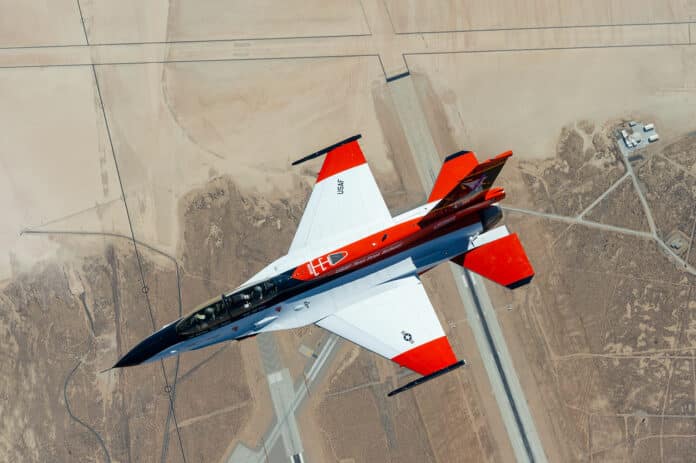The aerospace industry is definitely making significant strides towards the machine-learning era. The U.S. Air Force Test Pilot School and the Defense Advanced Research Projects Agency (DARPA) were recognized as finalists for the 2023 Robert J. Collier Trophy, a formal acknowledgment of recent breakthroughs that have launched the machine-learning era within the aerospace industry.
Their collaboration has led to recent breakthroughs in artificial intelligence algorithms using the X-62A VISTA aircraft as part of DARPA’s Air Combat Evolution program.
“The potential for autonomous air-to-air combat has been imaginable for decades, but the reality has remained a distant dream up until now. In 2023, the X-62A broke one of the most significant barriers in combat aviation. This is a transformational moment, all made possible by breakthrough accomplishments of the X-62A ACE team,” said Secretary of the Air Force Frank Kendall. Secretary Kendall will soon take flight in the X-62A VISTA to personally witness AI in a simulated combat environment during a forthcoming test flight at Edwards.
The teams achieved a significant milestone in the aerospace industry. In less than a year, they installed live AI agents into the X-62A’s systems and demonstrated the first AI versus human within-visual-range engagements, also known as a dogfight. The team made over 100,000 lines of flight-critical software changes across 21 test flights to achieve this feat.
The successful AI dogfights proved that non-deterministic artificial intelligence can be used safely in aerospace. The X-62A VISTA was paired against manned F-16 aircraft in the skies above Edwards, where initial flight safety was built up first using defensive maneuvers before switching to offensive high-aspect nose-to-nose engagements. The dogfighting aircraft got as close as 2,000 feet at 1,200 miles per hour.
The first-ever use of machine-learning-based autonomy in flight-critical systems will serve as a foundation for future aerospace AI advances that are safer and more reliable in commercial and defense applications.
“The X-62A is an incredible platform, not just for research and advancing the state of tests, but also for preparing the next generation of test leaders. When ensuring the capability in front of them is safe, efficient, effective, and responsible, the industry can look to the results of what the X-62A ACE team has done as a paradigm shift. We’ve fundamentally changed the conversation by showing this can be executed safely and responsibly,” said Col. James Valpiani, commandant of the Test Pilot School.
Historically, machine learning has been prohibited in aerospace due to its high risk and lack of independent control. However, traditional autonomy has been executed for decades. The X-62A is flown with safety pilots onboard who have the independent ability to disengage the AI, but they did not have to activate the safety switch at any point during the dogfights over Edwards. This success is a testament to the trustworthiness of the algorithms used in the X-62A.
According to Lt. Col. Ryan Hefron, ACE program manager for DARPA, “We have to be able to trust these algorithms to use them in a real-world setting.”
While dogfighting was the primary testing scenario, it was not the end goal. The X-62A ACE program was designed to test autonomous artificial intelligence systems in the air. So, every lesson learned in the dogfighting scenario applies to every task that an autonomous system can be given.
“It’s very easy to look at the X-62A ACE program and see it as under autonomous control; it can dogfight, but that misses the point. Dogfighting was the problem to solve so we could start testing autonomous artificial intelligence systems in the air. Every lesson we’re learning applies to every task you could give to an autonomous system,” said Bill Gray, the school’s chief test pilot.
This achievement marks a significant milestone in the development of autonomous systems for aerospace applications.
The breakthrough in machine learning achieved by the X-62A VISTA project will continue to advance lessons learned into future programs of record. The X-62A VISTA will continue to serve a variety of customers for research purposes while providing crucial academic lessons for the next generation of test leaders.
The ACE program is a result of robust collaborations between academia, government, and private industry. Government partners in the ACE program include the Air Force Test Center, Air Force Research Laboratory, DARPA, and the Air Force Test Pilot School. Academic partners in the program include Johns Hopkins University and MIT’s Computer Science and Artificial Intelligence Laboratory. Industry partners involved in ACE include Calspan Corporation, Cubic Corporation, EpiSci, Lockheed Martin Skunk Works, and Shield AI.
